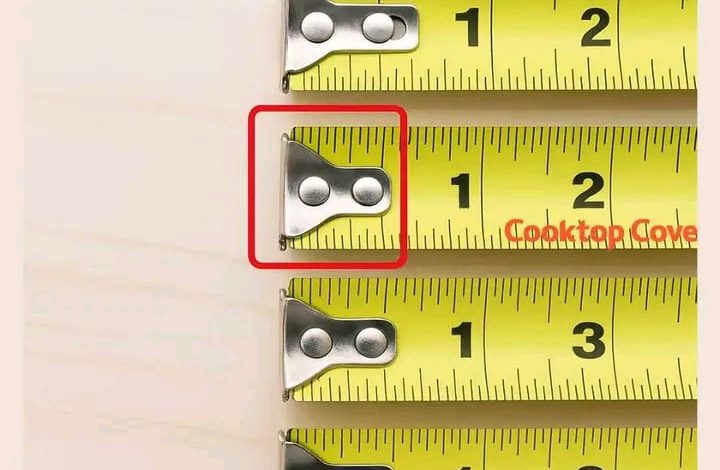The Hidden Genius Behind the “Loose Tip” on Your Measuring Tape

ADVERTISEMENT
The Hidden Genius Behind the “Loose Tip” on Your Measuring Tape
Introduction:
We’ve all been there—pulling out a measuring tape, only to notice that the little metal tip at the end seems…loose. Instinctively, many people assume it’s broken or worn out, perhaps due to overuse or a manufacturing flaw. But what if we told you that this tiny, wiggly piece isn’t a flaw at all—but a brilliantly engineered feature? This seemingly loose part plays a critical role in ensuring precision, and it’s one of the cleverest design elements most people never realize they’re benefiting from.
Main Body:
The image above illustrates what countless DIYers, carpenters, and homeowners have scratched their heads over: the front end of the measuring tape—the metal hook—isn’t firmly fixed. It moves slightly back and forth, and this often causes people to second-guess its reliability.
But the truth is, that bit of play is intentional and extremely important. Here’s why:
ADVERTISEMENT
It Accounts for Thickness
That small movement in the metal tip—usually about 1/16 of an inch (or 1.6mm)—compensates for the thickness of the hook itself. When you measure something by hooking the tape over the edge (pulling the tape outward), the tip moves outward. When you measure by pushing the tape against a surface (like into a corner), the tip compresses inward. This allows for exact compensation in either direction. Without this feature, your measurements would always be slightly off depending on how you used the tape.
It Ensures Accuracy Whether You Push or Pull
Imagine trying to measure the inside of a cabinet and then the outside of a plank. If the metal tab didn’t move, your measurements could be off by the thickness of the tab—resulting in potentially costly or frustrating mistakes. But with this small sliding feature, the tape self-adjusts for the correct starting point, whether you’re pushing or pulling.
It’s a Sign of Smart Engineering
This is one of those moments where we marvel at the subtle genius of product design. Engineers build this “play” into the tab to align with how measurements are taken in real-world scenarios. The sliding feature is calibrated to a precise thickness so that your tape measure gives you consistent and accurate results, no matter how you use it.
Still Unsure? Try This Test
Hook your tape over a piece of wood and measure from the outside edge. Then push the tape up against the same wood from the inside and measure again. You’ll notice both results are the same—thanks to that “loose” tip. It’s not an error—it’s precision engineering.
Conclusion:
ADVERTISEMENT
So the next time you pick up your measuring tape and notice that the metal tip shifts slightly, don’t think it’s damaged—appreciate it. That tiny, unnoticed feature is one of the smartest components of the entire tool. It ensures your measurements are accurate, no matter how you use it. What might seem like a design flaw at first glance is actually a sign of thoughtful, user-focused innovation. It’s a reminder that sometimes, the smallest details are the most powerful—and that good design doesn’t always need to shout to be brilliant.
Would you like this turned into a short social media caption or a visual tip post for DIY enthusiasts?




